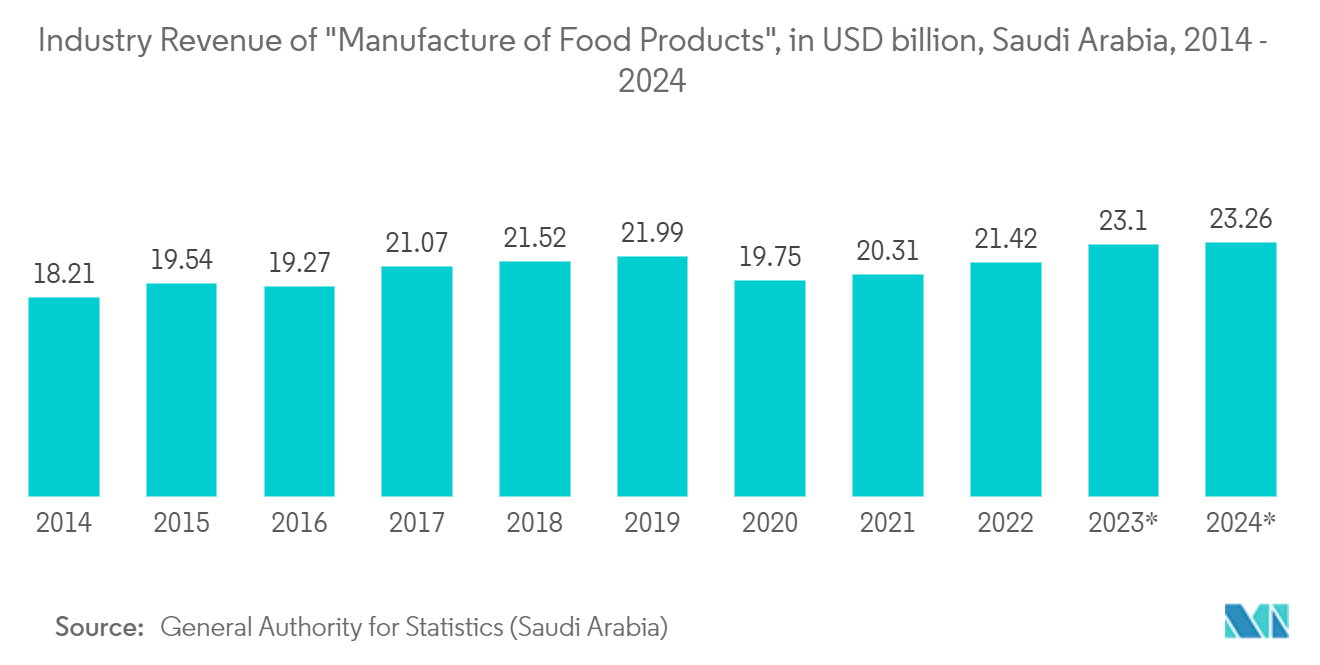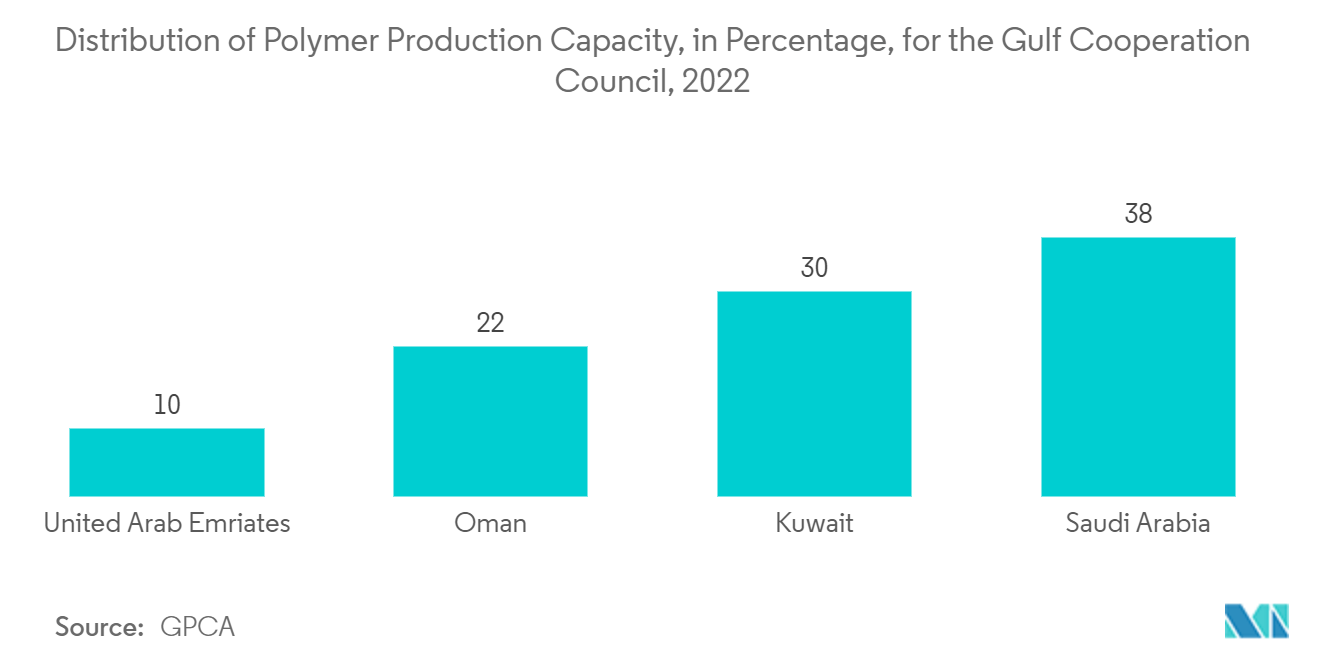Market Trends of Saudi Arabia Rigid Plastic Packaging Industry
This section covers the major market trends shaping the Saudi Arabia Rigid Plastic Packaging Market according to our research experts:
Increasing Demand across End-user Sectors to Drive the Market
- The demand for rigid plastic packaging solutions has been experiencing positive growth across end-user sectors such as food, retail, consumer goods, cosmetics, pharmaceuticals, and others. The demand is attributed to rapid urbanization, which usually translates to increased consumer spending and production of consumer goods, a large expatriate population, and the changing dietary habits of the resident citizens.
- Due to the increasing penetration of organized retail formats, such as hypermarkets, supermarkets, and e-commerce, the country's processed and packaged food market is exhibiting a strong growth rate.
- The government's initiatives to diversify its economic dependence on the oil and gas industry resulted in its support for real estate developments and increased retail market opening. This is expected to open new opportunities for rigid plastic packaging and increase demand from various industries.
- Saudi Arabia has the largest Food and Beverage (F&B) industry in the Middle East. The Saudi General Authority for Investment (SAGIA) predicts that spending on food service will increase by 6% per year in the coming years.
- In 2021, Saudi Arabia exported approximately USD 1.1 billion worth of food products to the region, an increase of nearly 2% since 2020. The main products consisted of dairy, snack foods, processed foods, processed dates, processed fruit and vegetables, sugar and sweeteners, and poultry meat (Source: Food Export Association of the Midwest USA and Food Export USA-Northeast).
- In April 2022, the Saudi Ministry of Environment, Water, and Agriculture called for investments in four agricultural projects to enhance the Kingdom's food security. The projects in Makkah, Qassim, and Jazanseek produce high-quality vegetables and fruits. Such developments are expected to increase the demand for rigid packaging solutions such as trays and containers in the food and beverage sector.
- The recent developments in the healthcare, pharmaceuticals, and cosmetics markets are expected to remain the primary drivers of the demand for plastic packaging products. The increasing consumption of skin and healthcare products, primarily packaged using plastic materials, boosts the market's growth in the country.

Polyethylene Terephthalate (PET) Holds Major Market Share
- Polyethylene terephthalate (PET) is an aliphatic polyester. It is semi-crystalline when stable, used in daily objects and can be easily recycled. It is used in automotive and electronics packaging, textiles, foils, and molded parts. It also shows resistance to impact, moisture, and solvents. Derived from PE, Polyethylene terephthalate, or PET belongs to the polyester family and is used in typical applications that are very lightweight, rigid, and flexible packages.
- Polyethylene terephthalate (PET) is a popular plastic option for thermoforming due to its high-strength barrier and versatility. It can be molded into almost any shape before cooling to extend shelf life. The resulting resistance to tampering and external influences makes PET suitable for sensitive applications such as food containers, beverage bottles, and medical device packaging.
- According to the International Trade Administration, the Middle East region is growing at an estimated 36%, with Saudi Arabia being the highest revenue generator in the regional market. Saudi Arabia recently accounted for about 52% of vehicles sold in the Gulf Cooperation Council (GCC). Sales are projected to reach 543,000 by 2025, with electric vehicles (EVs) accounting for just 32,000. This is anticipated to increase the demand for PET domestically, as automobiles are the primary end-user of the material. Increasing demand is expected to boost the polyethylene terephthalate market in the coming years.
- PET plastic bottles are now replacing heavy and fragile glass bottles to provide reusable packaging for mineral water and other beverages and enable a more economical shipping process. Due to its transparency and natural CO2 barrier properties, PET has many applications and can be easily blown into bottles or molded into other shapes. Colorants, UV blockers, and other additives can be used to enhance the properties of PET to develop bottles that meet a brand's specific needs. In addition, particular features such as transparency make it highly versatile for various uses, especially bottled water. Polyolefins are some of the most crucial raw materials used for plastic packaging. According to the recent estimates of the GPCA, the country has around 95 kg per capita consumption of plastic, making it the largest consumer of plastic products in the entire GCC.
- According to a survey conducted by ChemAnalystin in January 2022, Saudi Arabia's FMCG companies are still opting for 100% virgin plastic packaging. Additionally, Saudi Arabia's R-PET market is forecast to remain bearish as prices have fallen steadily, in line with stagnant demand patterns.


